After the United States achieved President John F. Kennedy’s goal of landing a man on the Moon and returning him safely to the Earth, policymakers asked the question, after Apollo, what next? Shortly after taking office in 1969, President Richard M. Nixon empaneled a group of experts to provide him with recommendations on the nation’s future direction in space. Faced with tight federal budgets, President Nixon could not support most of the panel’s recommendations due to their high cost. In January 1972, he directed NASA to develop and build a reusable space transportation system, commonly known as the space shuttle. The reusability of the shuttle’s components was expected to provide regular access to space to many customers, while at the same time reducing costs.
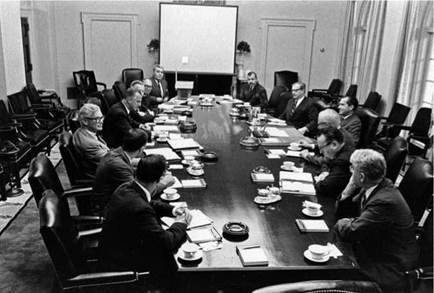
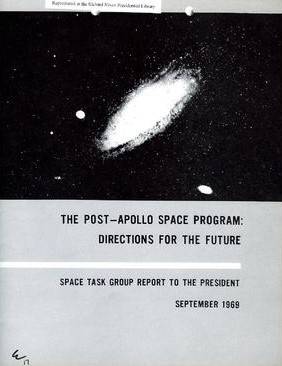
Left: Meeting at the White House to present the Space Task Group (STG) Report to President Richard M. Nixon. Image credit: Courtesy Richard Nixon Presidential Library and Museum. Right: The cover of the STG Report submitted to President Nixon.
The July 1969 Apollo 11 mission fulfilled President Kennedy’s goal of landing a man on the Moon and returning him safely to the Earth before the end of the 1960s. Other than five more Moon landings and a short-lived experimental space station, the United States lacked a clear long-term plan for its human spaceflight program following Apollo. In February 1969, shortly after taking office, President Nixon appointed a Space Task Group (STG), led by Vice President Spiro T. Agnew who chaired the National Aeronautics and Space Council, to report back to him on options for the American space program in the post-Apollo years. In the report titled, “The Post-Apollo Space Program: Directions for the Future” and presented to President Nixon in September 1969, the STG advocated for a well-balanced human and robotic space program. In the human spaceflight area, the group’s recommendations included options to build an Earth-orbiting space station with a space transportation system to support it, a lunar-orbiting space station, a base on the lunar surface, and a human expedition to Mars. Since these options all required slight to significant increases in NASA’s annual budget, the President took no immediate action on the STG recommendations. Faced with the still ongoing conflict in southeast Asia and domestic programs competing for scarce federal dollars, the fiscally conservative Nixon decided these plans were just too grandiose and far too expensive.
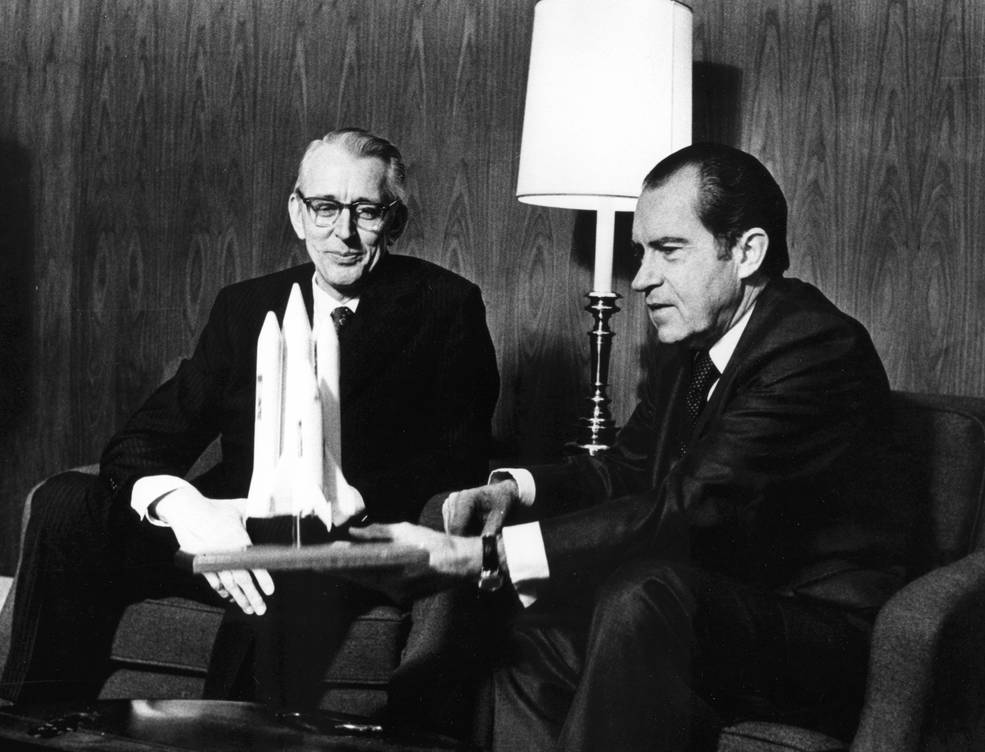
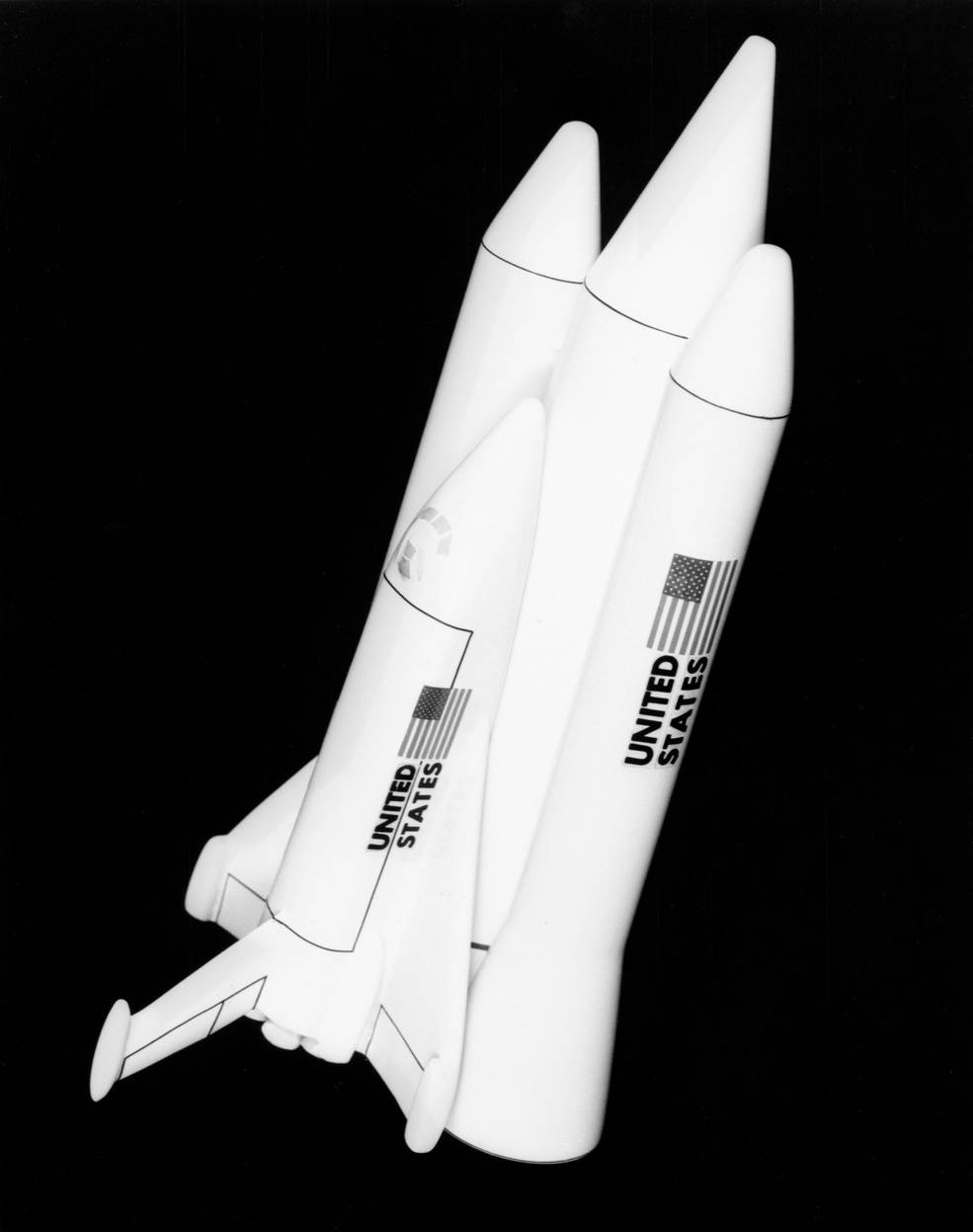
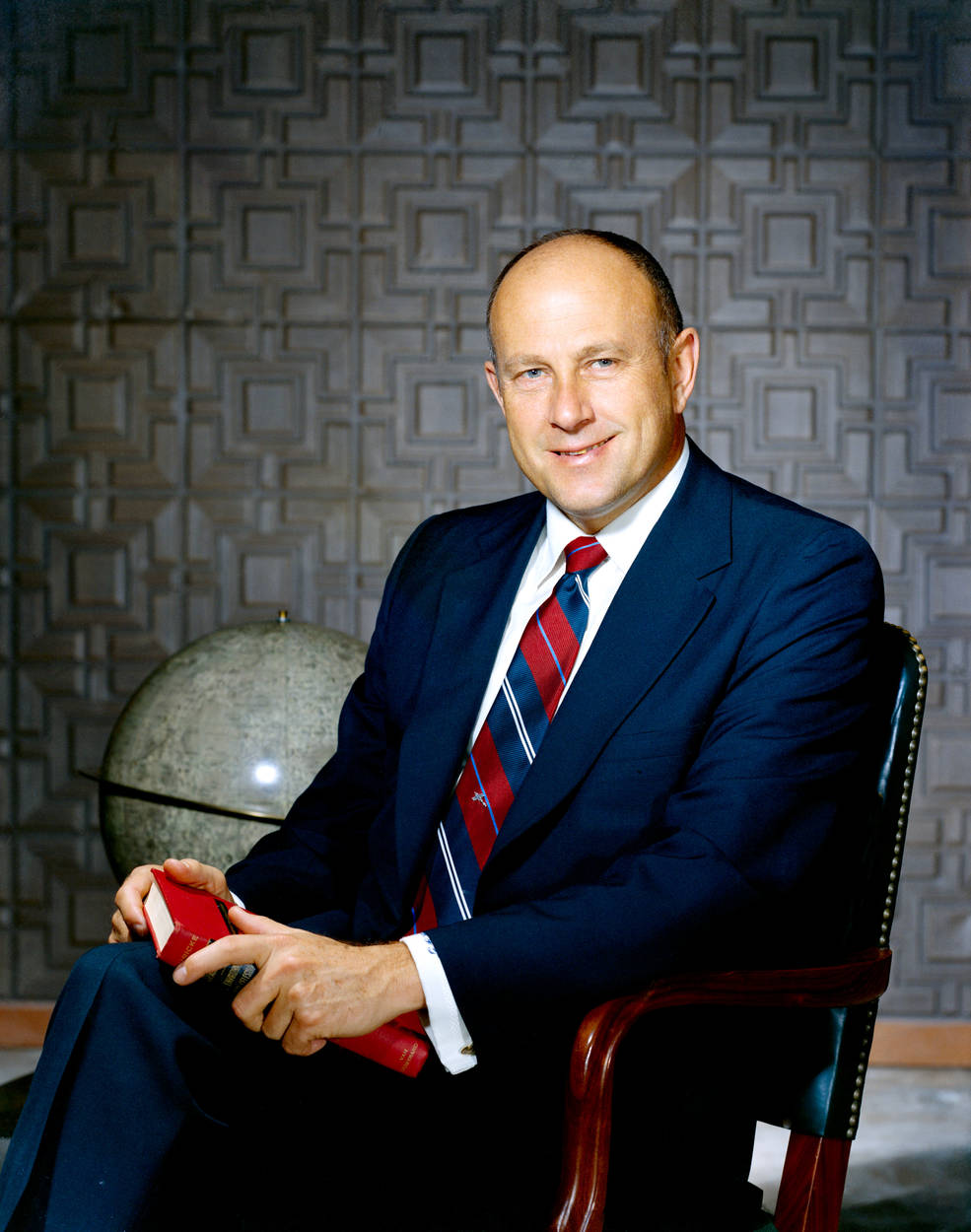
Left: NASA Administrator James C. Fletcher, left, and President Richard M. Nixon announce the approval to proceed with space shuttle development. Middle: Model of the space shuttle that Administrator Fletcher and President Nixon are holding. Right: Robert F. Thompson served as the first space shuttle program manager, from 1970 to 1981.
More than two years after the STG submitted its report to him, on Jan. 5, 1972, President Nixon directed NASA Administrator James C. Fletcher to develop the Space Transportation System, the formal name for the space shuttle – the only element of the STG’s recommendations to survive the budgetary challenges. “The decision by the President is an historic step in the nation’s space program,” said Administrator Fletcher. The Manned Spacecraft Center (MSC), now NASA’s Johnson Space Center in Houston, was given responsibility for overall management of the space shuttle program, including systems engineering as well as development of the orbiter vehicle. NASA’s Marshall Space Flight Center in Huntsville, Alabama, received the responsibility of developing the shuttle’s booster stage and the orbiter’s main engines, and NASA’s Kennedy Space Center in Florida was tasked with the development of launch and recovery facilities. On Feb. 13, 1970, MSC had established the Space Shuttle Program Office and named Robert F. “Bob” Thompson as its manager. Prior to the formal announcement of the program, the initially small office had studied various feasibility concepts for the space shuttle, among them using piloted flyback reusable boosters. In March 1972, NASA decided to use less expensive reusable solid rocket boosters to aid the shuttle in getting off the launch pad. The boosters would parachute into the ocean for recovery, refurbishment, and reuse.
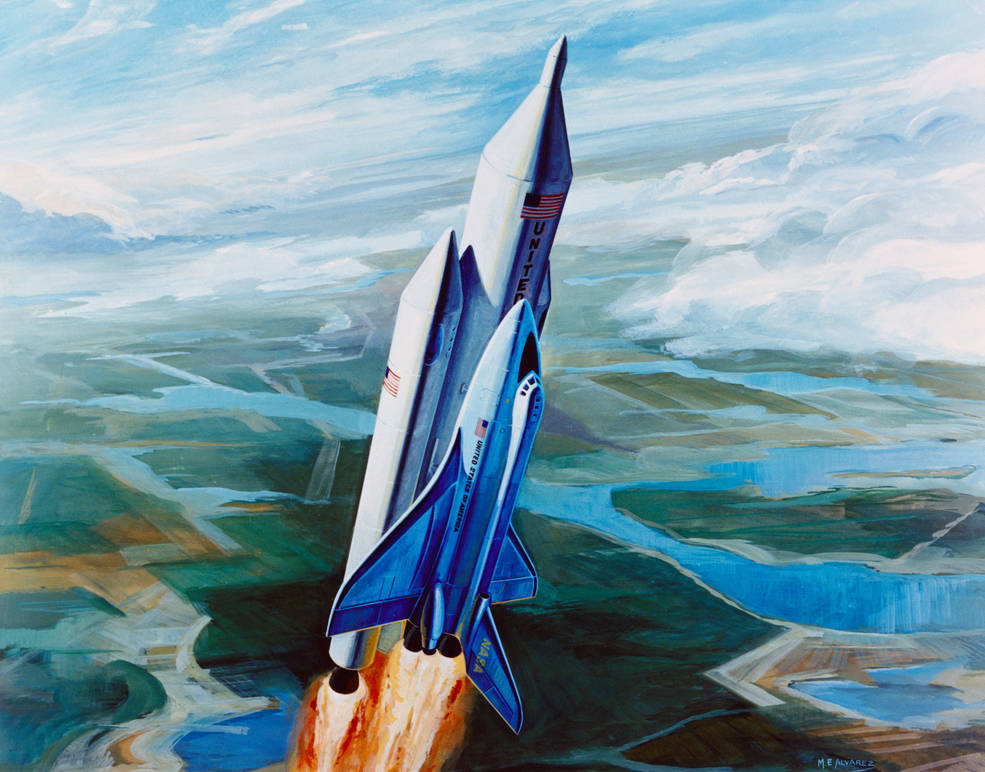
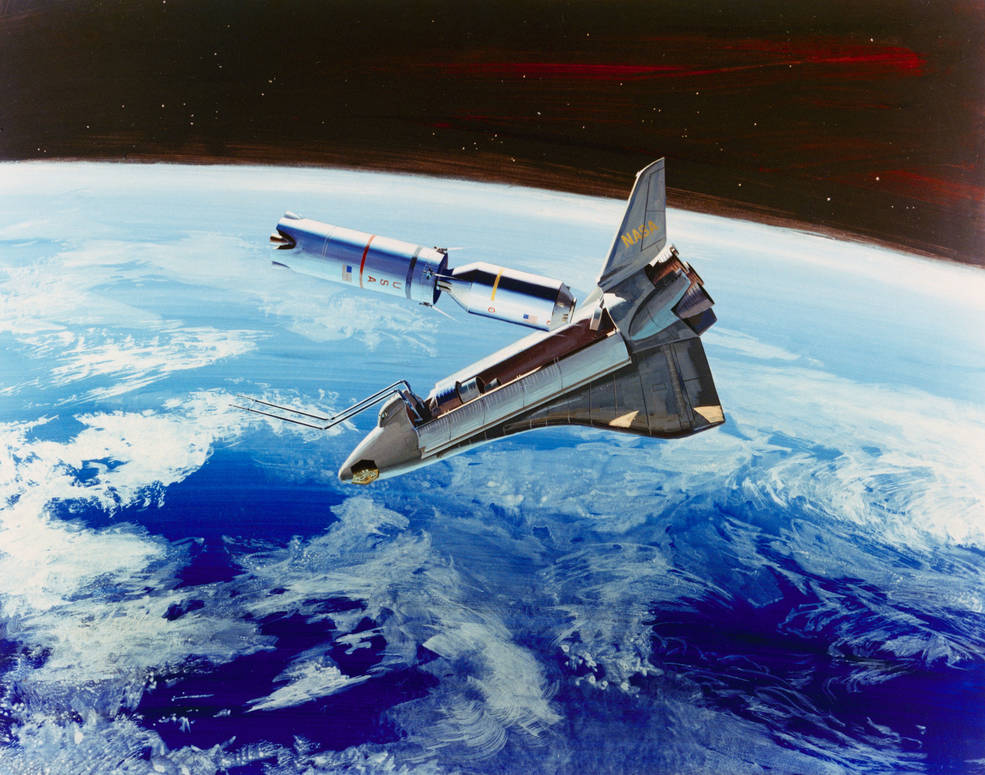
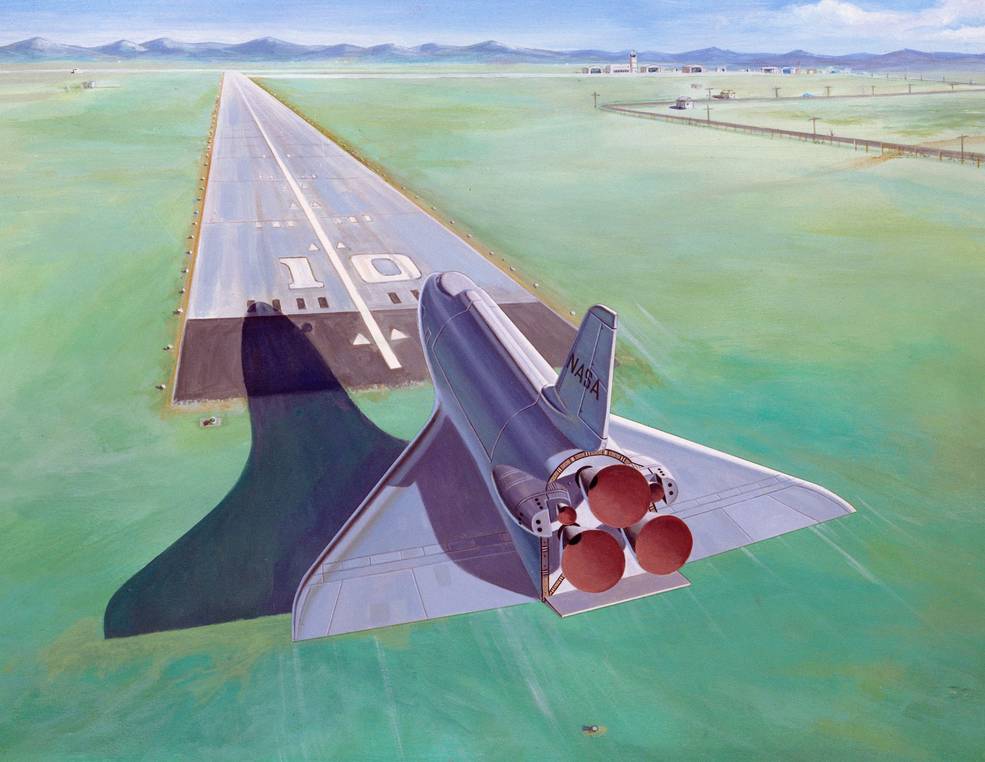
As shown in these illustrations from 1972, the space shuttle would launch like a rocket, left, complete its mission in Earth orbit, such as deploying a satellite, middle, and return to Earth to land on a runway like an airplane, right.
As envisioned, the reusable space shuttle would revolutionize space transportation services. It would launch vertically like a rocket, using two solid rocket boosters and its own main engines, from launch pads refurbished from the Apollo program. Once in orbit, it would carry out its mission, with astronauts deploying, repairing, and even retrieving commercial, scientific, and military satellites, or conducting remote Earth or astronomical observations, or performing science experiments in a shirt-sleeve laboratory-like environment. The mission accomplished, astronauts would pilot the shuttle orbiter back to Earth and land it on a runway like a large glider to be refurbished and relaunched on its next mission. Once fully operational, it was expected that flights would occur every two weeks, with a fleet of orbiters each capable of making 100 flights into space. The first orbital flight test of the space shuttle was expected to take place in 1978 with the system operational by 1980. To enable the space shuttle to accomplish these missions, NASA needed to develop several new technologies, including high-performance reusable main engines, advanced avionics, and a reusable thermal protection system to enable the orbiter to make repeated reentries into the Earth’s atmosphere. Development of these technologies proved to be challenging.
John Uri
NASA Johnson Space Center






















